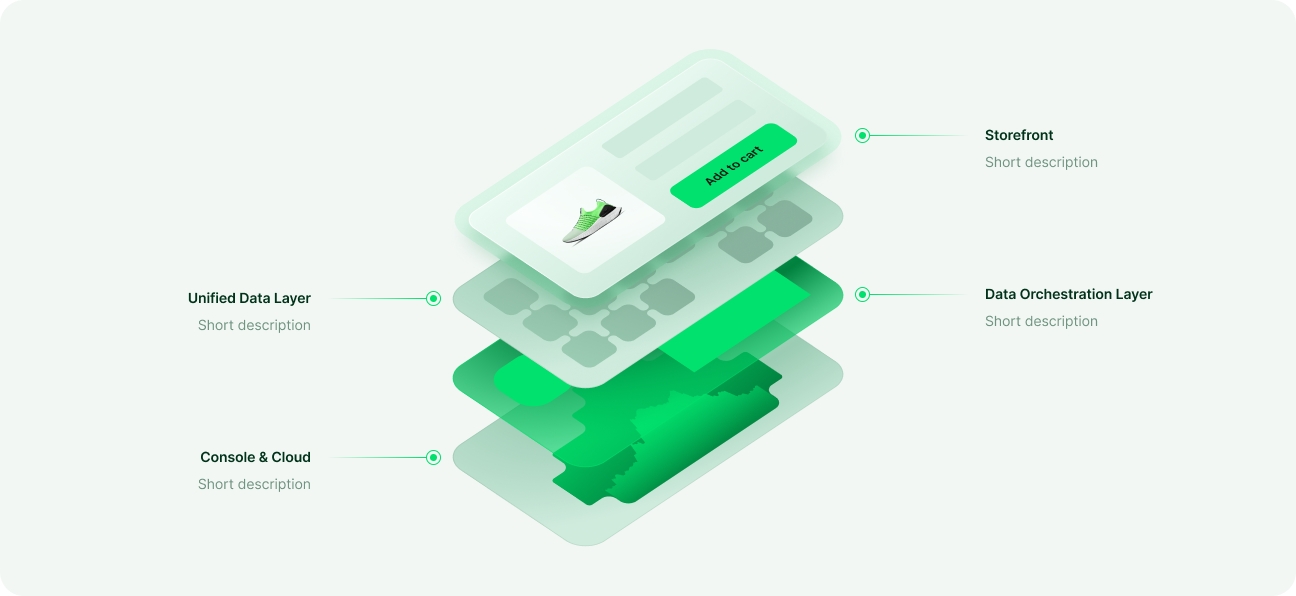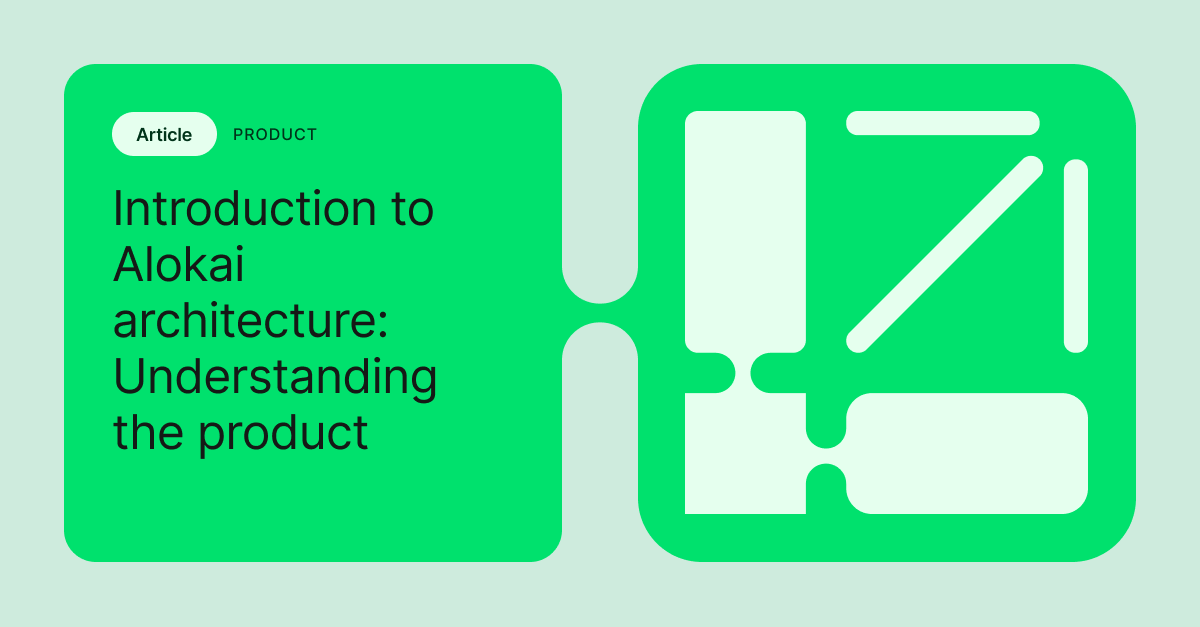Over 72% of ecommerce transactions now happen on mobile devices, and that number is only getting higher. Customers browse, compare, and buy while commuting, waiting in line, or relaxing on their couch. Mobile has become the dominant channel for discovery and engagement, particularly in emerging markets with high smartphone penetration.
But building for mobile devices is no longer a matter of just having a responsive website and calling it a day.
To really meet customer expectations across platforms, brands are expected to deliver native-quality enhanced user experiences on iOS, Android, and web, all at once.
That’s where the strategy for building ecommerce mobile apps come into play – and where things get tricky.
The challenge: One experience, multiple platforms
Let’s say you want to build a mobile ecommerce app that works on iPhones, Android devices, and has a smooth experience on desktop as well. It’s the same app in spirit – same online store, products, cart, search, accounts, and promotions. However, you’ll quickly run into a major technical challenge: how do you build it once and run everywhere without multiplying the effort?
This is a crucial question to ask early on, as many companies that failed to do so ended up with a mobile ecommerce app that's hard to maintain, expensive, and inefficient.
We definitely don’t want that, especially in a market where fast, intuitive user interfaces and pleasant shopping experiences are expected by default.
So how to approach the strategy for mobile?
Here are the 3 common paths brands consider when building ecommerce apps:
Solution | Pros | Cons |
Mobile-first PWA | - Single codebase for all platforms (easier and cheaper to maintain). - Fast load times and good performance on modern browsers. - No app store approval needed. | - Limited access to native device features. - Not listed in app stores by default. - Lower discoverability. |
Native apps | - Full access to native features (push, geolocation, biometrics, etc.). - Best-in-class performance and responsiveness. - Strong presence in app stores. | - High development and maintenance costs (separate teams, codebases). - Slower release cycles. - Harder to maintain feature and UX parity. |
Hybrid apps | - High code reuse across platforms. - Lower development and maintenance costs. - Access to many native features via plugins. - Faster time-to-market. | - Some native features may still require platform-specific work. - Slight performance tradeoffs in complex use cases. |
Solution 1: Mobile-first PWA
Progressive Web Apps (PWAs) are an elegant idea: one codebase, written in web technologies (HTML, CSS, JavaScript), that can work across all devices. They’re fast, responsive, and can be installed on phones, too. You build once and reach everyone... in theory.
The reality is not as shiny.
PWAs are still not fully equivalent to native mobile apps. They don’t show up in the app store (unless you wrap them in a TWA for Android, but even then, Apple is still a problem). They can’t access all native device features.
And let’s face it – mobile users are just way more likely to look for applications in the app store. Without discoverability, you lose traffic, brand recognition, and trust.
PWAs may work well for simple mobile commerce apps or early-stage ecommerce websites, but their limitations can be costly for full-scale customer engagement.
Solution 2: Native apps for each platform
This is the “do it all” approach: build a separate app for iOS, Android, and your web storefront.
It’s undeniably powerful as it gives full access to device features like push notifications, geolocation, camera, and the best possible performance and UI responsiveness. From a user’s perspective, these are the gold standard for mobile commerce apps.
But the price for that power is complexity. You’re now maintaining 3 different codebases, written in 3 different languages (Swift, Kotlin, JavaScript), often by 3 different teams. Bugs, features, and even design tweaks now mean triple the work.
You lose velocity, cohesion, and your teams are perpetually catching up to each other.
Solution 3: Hybrid apps
Hybrid apps, especially those built with frameworks like React Native or Tauri, are a practical middle ground between the above options. They maximize code reusability across platforms without sacrificing too much in terms of UX or native app discoverability.
From a business perspective, hybrid development is increasingly the go-to approach for building ecommerce mobile apps because it allows for faster time-to-market, lower development costs, and a more unified shopping experience across mobile and web.
That said, simply choosing a hybrid framework isn’t the full answer. Creating efficient mobile ecommerce apps means solving more than just the "code once, deploy everywhere" problem.
Under the surface, you're dealing with layers of complexity: UI consistency, business logic portability, API fragmentation, mobile commerce-specific flows like authentication or checkout for your online store, and more.
Technology alone doesn’t address all of it; you need a smart architecture that brings it all together.
Approaching hybrid development the smart way
Efficient multi-platform development today is about shared code and clean separation of concerns – not just between platforms, but across the full lifecycle of design, logic, and data.
That’s what modern hybrid development aims to solve, particularly for mobile ecommerce apps that need to support seamless user experiences across different touchpoints.
Here are the 3 core principles to make it work:
1. Unify your UI through a design system
Whether you’re on web or mobile, your brand should look and feel consistent.
A shared design system built with reusable components ensures that developers don’t reinvent the wheel on each platform. For an ecommerce mobile app, this also ensures consistent product offerings, navigation, and checkout experiences in your online store across devices.
2. Write business logic once
By using a cross-platform framework like React Native or Tauri, you can unify much of your application logic (product listings, cart flows, customer engagement features, and authentication) into a single JavaScript codebase.
This way, you can make changes in one place for all of the ecommerce apps that you have, whether they’re mobile websites or native mobile apps.
3. Decouple your data
Most teams hit a wall with APIs. Different channels demand different data views, but the logic behind them shouldn't change.
Building an abstraction layer between your frontends and APIs helps keep your architecture sane. Also, in case some apps would need a different API model or even a different vendor, you can use the integration layer to unify the data model so you can still reuse the same business logic and UI for it.
This decoupling also simplifies managing mobile commerce sales flows, inventory visibility, and real-time personalization across platforms.
How we do this at Alokai
These principles aren’t just theoretical – they’re embedded in the Alokai stack and serve our customers very well in multi-app, multi-brand, and multi-region ecommerce projects.

Storefront UI
Our open-source UI library and design system provides accessible, production-ready components that ensure consistent user experience across all your ecommerce apps, whether on web or mobile devices.
Alokai Connect
Alokai Connect is our integration and orchestration layer. It decouples your frontend applications from third-party services (like commerce engines, CMSs, or payment providers), making your architecture cleaner and easier to scale.
Unified Data Layer
Built into Alokai, theUnified Data Layer abstracts the differences between vendor APIs so you can easily switch providers or tailor services to different channels without rewriting your frontend logic.
Alokai Cloud
Once your ecommerce apps are built, deploying to multiple channels or regions is frictionless. You can target specific platforms, localize behavior, and scale globally without adding complexity.
Together, these tools form the foundation of our Multistore architecture — not just for handling regional storefronts, but for managing multiple applications across web, iOS, and Android from a single codebase.
The power of multistore architecture for ecommerce apps
The real engine behind this setup is our multistore architecture for the storefront.
It’s a solution for managing multiple applications (for example web, iOS, and Android), models (B2B/B2C, different brands), and regions from a single codebase without duplicating code.
It helps teams:
Reuse UI components and features across web and native mobile apps
Maintain consistent logic and UX across platforms without duplication
Customize per-platform behavior while sharing a common foundation
This setup lets you treat your mobile and desktop apps as variants instead of disconnected silos, and scale efficiently without sacrificing flexibility.
And, as you grow, the same architecture expands naturally to support multiple brands, locales, and regional storefronts.
Conclusion: Scalable ecommerce apps start with the right architecture
Even if you solve the hybrid equation, you're still left with a broader issue: supporting different applications across multiple channels.
Think ecommerce websites, native apps, and mobile ecommerce platforms – each with its own context, UX constraints, and data flows. These aren't just different views of the same app. They're often treated as distinct applications that need to serve different purposes while staying consistent in experience.
Managing all of these variations from a single codebase is difficult. Different authentication flows, checkout customizations, mobile app development constraints, and even content formatting requirements make things more complex than they appear.
This is the kind of problem Alokai was built to handle – not just for regional storefronts, but for running multiple applications from a single, flexible architecture.
Ready to simplify your mobile ecommerce strategy?


















